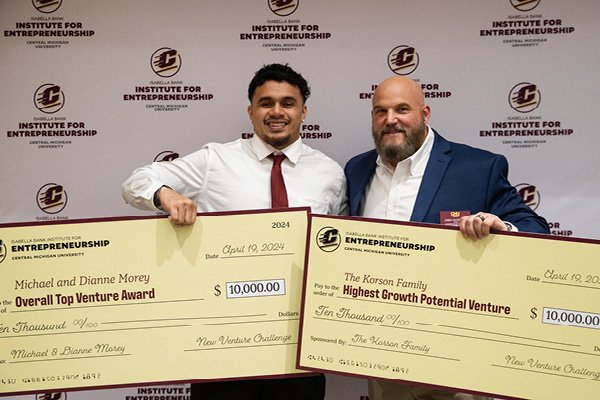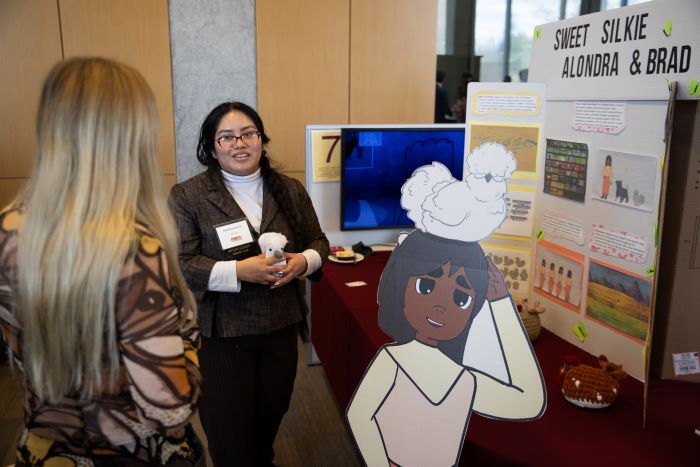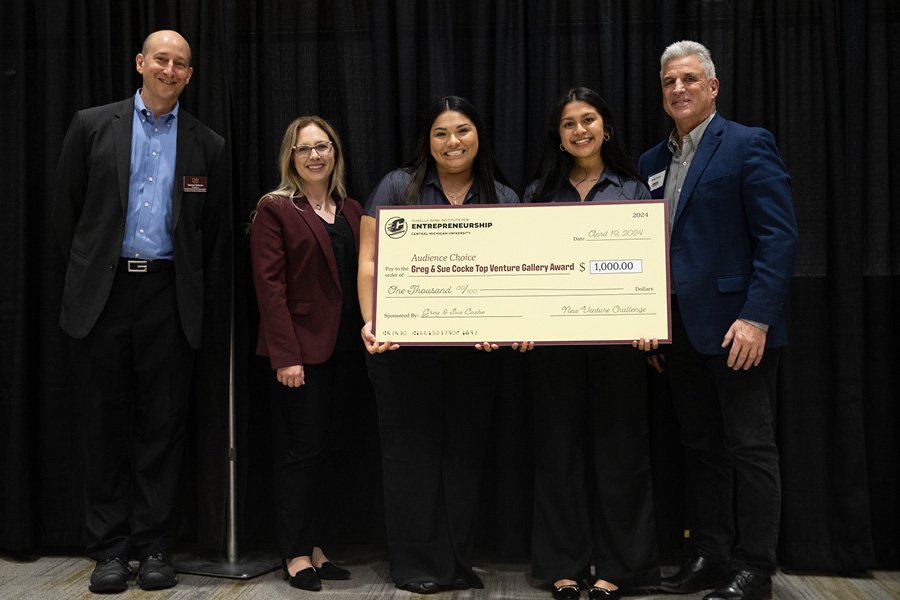
Start up
Passion. Potential. Pitches. Don't miss any of the 2025 New Venture Challenge excitement.
Tune in Friday, April 11 at 1 p.m. for great ideas and fierce competition. Then, join the judges, mentors, spectators and teams as they see who is going home with thousands of dollars in venture financing. The awards broadcast begins at 6:30 p.m. and one team will walk away as the overall best venture.
Central Michigan University’s College of Business Administration is the home of the Isabella Bank Institute for Entrepreneurship and the first Department of Entrepreneurship in the state of Michigan. We are a student-centric hub where experiential, curricular, and external entrepreneurial opportunities intersect.
Our mission is to maximize student success by fostering a campus-wide entrepreneurial mindset that promotes inter-disciplinary collaboration and the creation of new ventures.
We aim to create innovative programming, boost cross-campus and ecosystem collaboration and provide a comprehensive mentoring program.
Our institute provides extracurricular opportunities and is open to all undergraduate and graduate CMU students.
Are you interested in becoming an entrepreneur?
Every journey is unique. Explore the opportunities that interest you.

The story of Natalia Zakharova’s latest research project starts 500 million years ago when Michigan was at the bottom of a shallow sea.
Dust, dirt and decomposing organisms floated down through the water to the bottom, forming layers. Layers slowly formed on top of layers, with new sediment compressing the old into two kinds of rock.
One, created by very fine particles, formed rock like shale, smooth on the surface but the particles so tightly compacted that there is little room for water or gas to move through it.
The other, created by bigger particles, formed rock-like sandstone with tiny – sometimes microscopic – pores through which fluids and gases could seep.
Zakharova’s work focuses on identifying the first kind to help unlock the storage potential of the second. She is working with researchers at other institutions to figure out how to store carbon dioxide underground.
To do it, they need to find formations with the more porous rock on the bottom to store the gas and the denser on top to prevent it from escaping back into the atmosphere, said Zakharova, a member of the Earth and Atmospheric Sciences faculty.
Carbon dioxide is very light, she said. Squirt it into the ground and it will try to work its way back to the surface and escape.
The dense rock provides a cap, but the gas will also work its way horizontally looking for a way up. So, they need to find a cap that covers a large enough area.
They also need to identify caps strong enough that the pressure of the trapped gas doesn’t rupture the cap.
“If the containment is compromised, the carbon dioxide can flow through,” she said.
While they understand the basic construction of rock, it’s also not formed with uniform density and strength. In one place, it might withstand the pent-up pressure of stored carbon. A short distance away, it might have a brittle streak that pressure would cause it to break.
Examining core samples to locate caps sufficiently strong to keep the carbon dioxide below ground has provided opportunities for undergraduate students working in her lab, Zakharova said.
One just presented at a Geological Society of America conference, she said. Two more will work with her this summer.
The grant that is funding the multi-institutional project lasts for two years, she said. Analyzing the data will provide research opportunities for years after it ends.


Explore special opportunities to learn new skills and travel the world.

Present your venture and win BIG at the New Venture Challenge.

Boost your entrepreneurial skills through our workshops, mentor meetups and pitch competitions.

Learn about the entrepreneurship makerspace on campus in Grawn Hall.

Present a 2-minute pitch at the Make-A-Pitch Competition and you could win prizes and bragging rights!

Connect with mentors and faculty who are here to support the next generation of CMU entrepreneurs.

Are you a CMU alum looking to support CMU student entrepreneurs? Learn how you can support or donate to the Entrepreneurship Institute.